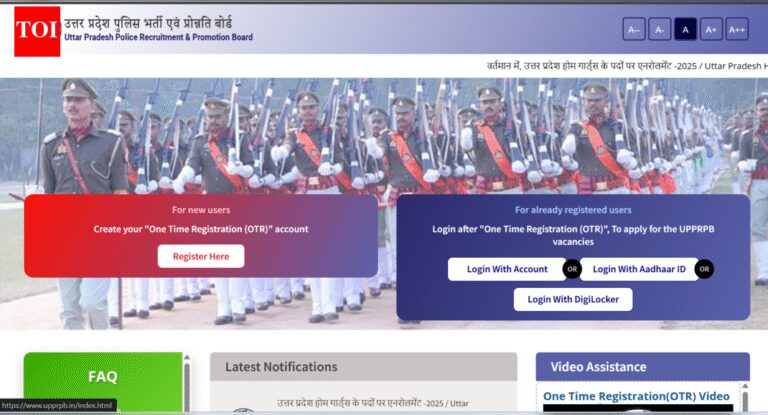
If you have been wanting to learn machine learning from an IIT professor without paying a course fee, IIT Madras has just opened that door for 2026. Its popular “Introduction to Machine Learning” course, offered via the government’s NPTEL/SWAYAM platform, is now open for free enrolment for the January–April 2026 run. Students can watch lectures, access notes and attempt assignments at no cost; only the optional certification exam carries a fee of ₹1,000.Taught by Prof Balaraman Ravindran, Professor of Computer Science and Mindtree Faculty Fellow at IIT Madras, this is a 12-week foundational course that has built a steady reputation as one of the strongest entry points into ML for Indian students and working professionals.
What is free and what is paid?
The most important distinction, especially for first-time NPTEL learners, is between enrolment and exam registration. In the official course description, IIT Madras and NPTEL clearly state that “the course is free to enrol and learn from”. Learners can sign up, attend all video lectures, download materials and submit assignments without any fee.However, those who want a formal, verifiable IIT–NPTEL certificate must separately register for a proctored exam, held at designated centres, by paying ₹1,000. This exam is optional and does not affect access to course content. In simple terms:
- Free layer: Learning (videos, assignments, notes, forums)
- Paid layer: Certification exam (₹1,000) + e-certificate if you pass
For many students, this allows a low-risk path into AI: they can start the course, see whether they can keep pace with the maths and programming, and decide closer to the exam window whether they want to pay for the certificate.
IIT Madras Machine Learning course key dates: Enrol now, exam later
The 2026 run follows NPTEL’s regular Jan–April semester pattern. According to the official schedule, here are the key dates:
- Course duration: 19 January 2026 to 10 April 2026
- Enrolment window: 17 November 2025 to 26 January 2026
- Exam registration: 13 December 2025 to 13 February 2026
- Exam date: 17 April 2026 (subject to change)
- Morning session: 9 am to 12 noon
- Afternoon session: 2 pm to 5 pm
The exam is offline and proctored, conducted at approved NPTEL centres across India. Exact city-wise centres and the slot allotted to each candidate are confirmed later through the hall ticket, which learners must download before the exam.This means students can quietly start learning in January, complete several weeks of content, and decide on certification any time before the exam registration closes in February.
IIT Madras Machine Learning course: How to apply
The sign-up process is straightforward and entirely online:
- Visit the official NPTEL course page for “NOC: Introduction to Machine Learning, IIT Madras”.
- Click on Join
- Log in using a Google/Microsoft account or an existing SWAYAM/NPTEL ID.
- Fill in the basic profile information (name, institution, year of study, etc.).
- Confirm enrolment – after this, lectures and assignments become available as per schedule.
Exam registration, if you wish to take the certificate exam, is done later through the NPTEL exam portal during the exam-registration window.
Who is this course really for?
On paper, the course is tagged as a UG/PG elective in Computer Science and Engineering, but the learner base is far wider. NPTEL’s own domain mapping lists it under Artificial Intelligence, Data Science and Computer Science specialisations. In practice, the course works best for:
- Senior undergraduate and postgraduate students in CSE, ECE, EE, IT, maths or related fields
- Working professionals trying to build a rigorous base in ML beyond shortcut tutorials
- Researchers in other disciplines (economics, biology, social sciences) who need statistical learning tools
IIT Madras recommends that learners be comfortable with basic programming and have some exposure to probability, linear algebra and optimisation. At the same time, the course design includes a Week 0 recap to revise these foundations, which is particularly useful for students coming back to maths after a gap.
Who is this course really for?
On paper, the course is tagged as a UG/PG elective in Computer Science and Engineering, but the learner base is far wider. NPTEL’s own domain mapping lists it under Artificial Intelligence, Data Science and Computer Science specialisations. In practice, the course works best for:
- Senior undergraduate and postgraduate students in CSE, ECE, EE, IT, maths or related fields
- Working professionals trying to build a rigorous base in ML beyond shortcut tutorials
- Researchers in other disciplines (economics, biology, social sciences) who need statistical learning tools
IIT Madras recommends that learners be comfortable with basic programming and have some exposure to probability, linear algebra and optimisation. At the same time, the course design includes a Week 0 recap to revise these foundations, which is particularly useful for students coming back to maths after a gap.
What you will actually learn over 12 weeks
IIT Madras structures its 2026 machine learning course as a deeply concept-driven introduction, rather than a quick, tool-led primer. The official outline stresses a “mathematically well-motivated” pathway into ML, moving slowly and deliberately through ideas before algorithms. The first two weeks function almost like a diagnostic warm-up, revisiting probability, linear algebra and convex optimisation, and introducing statistical decision theory—the intellectual backbone of modern ML. This phase helps students see that machine learning is not magic; it is the logical extension of statistics and optimisation.From Weeks 2 to 5, the course builds into the classical supervised learning core: linear and multivariate regression, shrinkage and subset methods, logistic regression, discriminant analysis, the perceptron, SVMs and early neural networks. Concepts such as MLE, MAP and Bayesian estimation sit alongside practical aspects like initialisation, training and validation, helping learners understand why models behave the way they do.Weeks 6 to 8 move into decision trees, ensemble methods—bagging, boosting, stacking, random forests—and probabilistic models such as Naive Bayes and Bayesian networks. The final month opens into richer terrain: graphical models, HMMs, clustering families, Gaussian Mixture Models, the EM algorithm, and even a gentle introduction to reinforcement learning. For a free course, the depth and spread are unusually comprehensive.
How the certificate is awarded
The certification mechanism is designed to reward consistent work across the semester, not just one-day performance.As per the official NPTEL course page:
- Assignment component: 25%
- NPTEL considers the average of the best 8 out of 12 weekly assignments.
- Exam component: 75%
- Based on the in-person, proctored exam score out of 100.
To earn a certificate, a learner must:
- Score at least 10/25 in the assignment component, and
- Score at least 30/75 in the proctored exam
Even if the combined total crosses 40/100, failing either cut-off means no certificate. The e-certificate, once awarded, carries the learner’s name, photograph, score break-up and the logos of IIT Madras and NPTEL, and can be verified online, which matters for résumés and higher-study applications.








